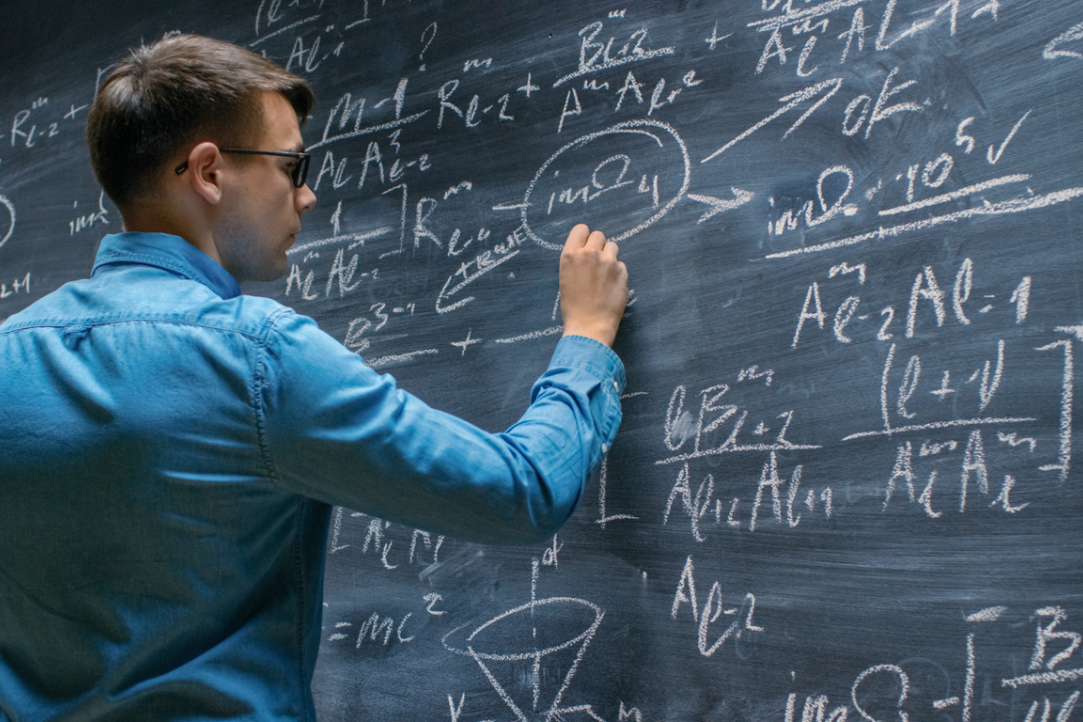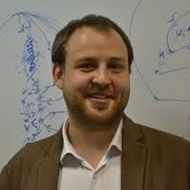Mathematicians from HSE University–Nizhny Novgorod Solve 57-Year-Old Problem

In 1968, American mathematician Paul Chernoff proposed a theorem that allows for the approximate calculation of operator semigroups, complex but useful mathematical constructions that describe how the states of multiparticle systems change over time. The method is based on a sequence of approximations—steps which make the result increasingly accurate. But until now it was unclear how quickly these steps lead to the result and what exactly influences this speed. This problem has been fully solved for the first time by mathematicians Oleg Galkin and Ivan Remizov from the Nizhny Novgorod campus of HSE University. Their work paves the way for more reliable calculations in various fields of science. The results were published in the Israel Journal of Mathematics (Q1).
Many mathematical and theoretical physics problems require precise calculations of complex specific values, such as how quickly a cup of coffee cools down, how heat spreads in an engine, or how a quantum particle behaves. Research into quantum computers and quantum information transmission channels, random processes, and many other areas important to modern science involve calculating semigroups of operators. Such calculations are based on the exponent, one of the most important mathematical functions expressed by the number e (approximately equal to 2.718) raised to a power.
However, in the case of very complex systems described by so-called unbounded operators, standard methods for calculating the exponent (semigroup of operators) stop working. In 1968, American mathematician Paul Chernoff proposed an elegant solution to this problem: a special mathematical approach now known as Chernoff approximations of semigroups of operators. This makes it possible to approximately calculate the required values of the exponent by consistently building more and more precise mathematical constructions.
Chernoff's method guaranteed that successive approximations would eventually lead to the correct answer, but did not show how quickly this would happen. Simply put, it was unclear how many steps were needed to achieve the desired accuracy. It was this uncertainty that prevented the method from being used in practice.
Mathematicians Oleg Galkin and Ivan Remizov from HSE University–Nizhny Novgorod solved this problem, which scientists around the world had struggled with for many decades. They managed to obtain general estimates of the convergence rate—that is, to describe how quickly the approximate values converge to the exact result depending on the selected parameters.

Ivan Remizov
‘This situation can be compared to a culinary recipe. Paul Chernoff indicated the necessary stages, but did not explain how exactly to select the optimal "ingredients"—auxiliary Chernoff functions that provide the best result. Therefore, it was impossible to accurately predict how quickly the “dish” would be ready. We have refined this recipe and determined which ingredients are best suited to make the method faster and more efficient,’ explains Ivan Remizov, senior researcher at the HSE International Laboratory of Dynamical Systems and Applications, senior researcher at the RAS Dobrushin Laboratory of the A.A. Kharkevich Institute for Information Transmission Problems, and co-author of the study.
Galkin and Remizov showed that Chernoff’s method can work much faster if the auxiliary Chernoff functions are chosen correctly. With the right selection of functions, the approximation becomes much more accurate even at the early stages of calculations. The mathematicians also proved a rigorous theorem: if the Chernoff function and the semigroup being approximated have the same Taylor polynomial of order k, and the Chernoff function deviates little from its Taylor polynomial, then the difference between the approximate and exact values decreases at least proportionally to 1/n^k, where n is the step number and k is any natural number reflecting the quality of the selected functions.

Oleg Galkin
Continuing the recipe analogy, the scientists have managed not only to clarify which ingredients work best, but also to accurately estimate how much faster the ‘dish’ is prepared if these optimal products are used. The formula derived by the mathematicians based on this analogy works like this: at each step of preparation, the result becomes more accurate, and the error decreases proportionally to one divided by n to the power of k, where n denotes the step number in the recipe, and k depends on the quality of the selected ingredients. The higher the value of k, the faster the desired result will be achieved.
Thus, Oleg Galkin and Ivan Remizov managed to solve a problem that had remained open for more than half a century. In addition to bringing clarity, their achievement could open up prospects and generate new problems to be solved. Although the study is theoretical in nature, its significance goes beyond pure mathematics. Such results often serve as the basis for developing new numerical methods in quantum mechanics, heat transfer, control theory, and other sciences where complex processes are modeled.
The theorem proposed by Oleg Galkin and Ivan Remizov was presented at the international scientific conference ‘Theory of Functions and Its Applications’ on July 5, 2025.
The work was supported by the HSE Fundamental Research Programme and the HSE International Laboratory of Dynamical Systems and Applications, grant No. 23-71-30008 of the Russian Science Foundation ‘Dissipative Dynamics of Infinite-Dimensional and Finite-Dimensional Systems, Development of Mathematical Models of Mechanical and Hydrodynamic Processes.’
See also:
HSE Linguists Study How Bilinguals Use Phrases with Numerals in Russian
Researchers at HSE University analysed over 4,000 examples of Russian spoken by bilinguals for whom Russian is a second language, collected from seven regions of Russia. They found that most non-standard numeral constructions are influenced not only by the speakers’ native languages but also by how frequently these expressions occur in everyday speech. For example, common phrases like 'two hours' or 'five kilometres’ almost always match the standard literary form, while less familiar expressions—especially those involving the numerals two to four or collective forms like dvoe and troe (used for referring to people)—often differ from the norm. The study has been published in Journal of Bilingualism.
Overcoming Baby Duck Syndrome: How Repeated Use Improves Acceptance of Interface Updates
Users often prefer older versions of interfaces due to a cognitive bias known as the baby duck syndrome, where their first experience with an interface becomes the benchmark against which all future updates are judged. However, an experiment conducted by researchers from HSE University produced an encouraging result: simply re-exposing users to the updated interface reduced the bias and improved their overall perception of the new version. The study has been published in Cognitive Processing.
Mathematicians from HSE Campus in Nizhny Novgorod Prove Existence of Robust Chaos in Complex Systems
Researchers from the International Laboratory of Dynamical Systems and Applications at the HSE Campus in Nizhny Novgorod have developed a theory that enables a mathematical proof of robust chaotic dynamics in networks of interacting elements. This research opens up new possibilities for exploring complex dynamical processes in neuroscience, biology, medicine, chemistry, optics, and other fields. The study findings have been accepted for publication in Physical Review Letters, a leading international journal. The findings are available on arXiv.org.
Large Language Models No Longer Require Powerful Servers
Scientists from Yandex, HSE University, MIT, KAUST, and ISTA have made a breakthrough in optimising LLMs. Yandex Research, in collaboration with leading science and technology universities, has developed a method for rapidly compressing large language models (LLMs) without compromising quality. Now, a smartphone or laptop is enough to work with LLMs—there's no need for expensive servers or high-powered GPUs.
AI to Enable Accurate Modelling of Data Storage System Performance
Researchers at the HSE Faculty of Computer Science have developed a new approach to modelling data storage systems based on generative machine learning models. This approach makes it possible to accurately predict the key performance characteristics of such systems under various conditions. Results have been published in the IEEE Access journal.
Researchers Present the Rating of Ideal Life Partner Traits
An international research team surveyed over 10,000 respondents across 43 countries to examine how closely the ideal image of a romantic partner aligns with the actual partners people choose, and how this alignment shapes their romantic satisfaction. Based on the survey, the researchers compiled two ratings—qualities of an ideal life partner and the most valued traits in actual partners. The results have been published in the Journal of Personality and Social Psychology.
Trend-Watching: Radical Innovations in Creative Industries and Artistic Practices
The rapid development of technology, the adaptation of business processes to new economic realities, and changing audience demands require professionals in the creative industries to keep up with current trends and be flexible in their approach to projects. Between April and May 2025, the Institute for Creative Industries Development (ICID) at the HSE Faculty of Creative Industries conducted a trend study within the creative sector.
From Neural Networks to Stock Markets: Advancing Computer Science Research at HSE University in Nizhny Novgorod
The International Laboratory of Algorithms and Technologies for Network Analysis (LATNA), established in 2011 at HSE University in Nizhny Novgorod, conducts a wide range of fundamental and applied research, including joint projects with large companies: Sberbank, Yandex, and other leaders of the IT industry. The methods developed by the university's researchers not only enrich science, but also make it possible to improve the work of transport companies and conduct medical and genetic research more successfully. HSE News Service discussed work of the laboratory with its head, Professor Valery Kalyagin.
Children with Autism Process Sounds Differently
For the first time, an international team of researchers—including scientists from the HSE Centre for Language and Brain—combined magnetoencephalography and morphometric analysis in a single experiment to study children with Autism Spectrum Disorder (ASD). The study found that children with autism have more difficulty filtering and processing sounds, particularly in the brain region typically responsible for language comprehension. The study has been published in Cerebral Cortex.
HSE Scientists Discover Method to Convert CO₂ into Fuel Without Expensive Reagents
Researchers at HSE MIEM, in collaboration with Chinese scientists, have developed a catalyst that efficiently converts CO₂ into formic acid. Thanks to carbon coating, it remains stable in acidic environments and functions with minimal potassium, contrary to previous beliefs that high concentrations were necessary. This could lower the cost of CO₂ processing and simplify its industrial application—eg in producing fuel for environmentally friendly transportation. The study has been published in Nature Communications.


